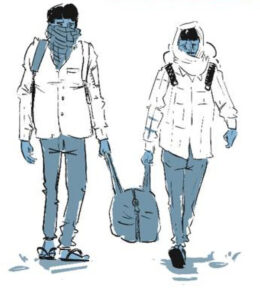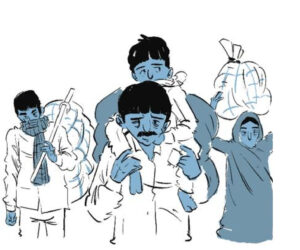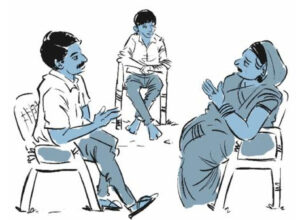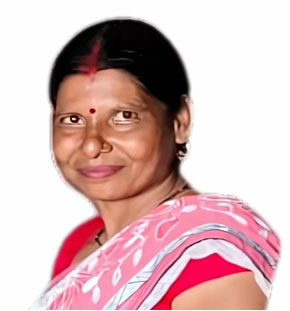India Post News Service
A migrator’s wife and a mother of four to charting her own path towards self-reliance
- The Migrator’s Wife. The Mother.
The story of waiting, uncertainty, and quiet sacrifice
I was scared when he left. Even before he packed his things, I was scared.

Every morning, my husband would wake up early, before the sun, and go to the fields. But no matter how hard he worked, it wasn’t enough. The money was getting less and less. We had six mouths to feed. One evening, he came home and said there was no other way, “We need to think of our children. We cannot have them suffer our own fate. I have to leave Budhadih and go to the city, to Gorakhpur. There is work there.”
My heart sank. I knew what it meant. I’d heard stories from the other women in the village—how their husbands left, how the city swallowed them up. But they sent money back. That’s what we needed.
Sometimes weeks go by before we hear from him. When the money comes, it helps. He sends Rs 15,000 every month. But it’s never enough. All of it goes towards educating our four children. One was studying for engineering college entrance exams. She got into IIT but had to drop out due to mental health issues. The next one is studying for medical entrance. The younger two will also follow their siblings and leave the village for higher education once they are done with school, I guess.
Every time the money arrives, I wonder how he’s managing out there.
I know he’s doing it for us. For our future. For our children.
I don’t blame him for leaving. I don’t blame the other men who left too. I blame the fields that don’t feed us anymore. I blame the rains.
- The Silent Wave of Migration
The men leave, the women stay behind, and the struggle continues
I wasn’t the only one.
 In our village, more and more men were leaving. First, it was a few, then most of the men I knew. It felt like a wave washing over us, one family after another watching their husbands, brothers, and sons pack up and leave for the cities. I am lucky. My husband found himself a mechanic’s job in Gorakhpur. It is not very far away but I barely get to see him.
In our village, more and more men were leaving. First, it was a few, then most of the men I knew. It felt like a wave washing over us, one family after another watching their husbands, brothers, and sons pack up and leave for the cities. I am lucky. My husband found himself a mechanic’s job in Gorakhpur. It is not very far away but I barely get to see him.
Across rural India, more than 37% of households depend on migration to survive. In districts like Gorakhpur, men go to cities like Delhi or Mumbai, working in factories, construction, or wherever they can find wages. The numbers are staggering—over 450 million people in India are on the move like this, traveling between villages and cities just to keep their families afloat.
We wait—for money that isn’t enough, for news from husbands far away, and for a future that feels uncertain.
- A Path to Swavalamban (self-reliance)
From a wife waiting for survival to a woman shaping her own future
When my husband left, I thought I had to manage alone. But with the help and support from Drishtee Foundation, I learned that the answer to our struggles was right here, among the women of our village.
That’s when we started talking about Swavalamban—self-reliance. Instead of depending on unpredictable city wages, we realized we could build something sustainable, right here in our village. We could create livelihoods for ourselves—and for other women. We could build a community.
In small groups, we learned skills like crafting, stitching, and making eco-friendly products. But it wasn’t just about learning—it was about transforming those skills into businesses that could support our families. Slowly, we started enterprises that brought income back into the village, creating jobs for other women along the way.
It became a cycle of support—one woman’s success became an opportunity for another. As we worked together, our confidence grew. We formed cooperatives, shared resources, and built connections to markets beyond the village.
 We were no longer just caretakers. We were becoming business owners, job creators, and community builders.
We were no longer just caretakers. We were becoming business owners, job creators, and community builders.
Today I am an established trainer in my community. I have trained over 150 women and make around Rs 6000 each month. Some of it I save. Some I need for daily expenses. I would like to train more women from neighboring villages to start their own enterprises and become self-reliant.
Swavlamban showed us that we could shape our own futures. We could thrive, even as the men were away. We no longer waited for the rains or for the city wages—we built something lasting, something strong.
If you would like to connect with me virtually or in person to learn more about my journey please reach out to the Drishtee team. If you would like to learn about Drishtee, visit drishtee.org
(This is part of a multi-part series showcasing rural development taking place in India)







